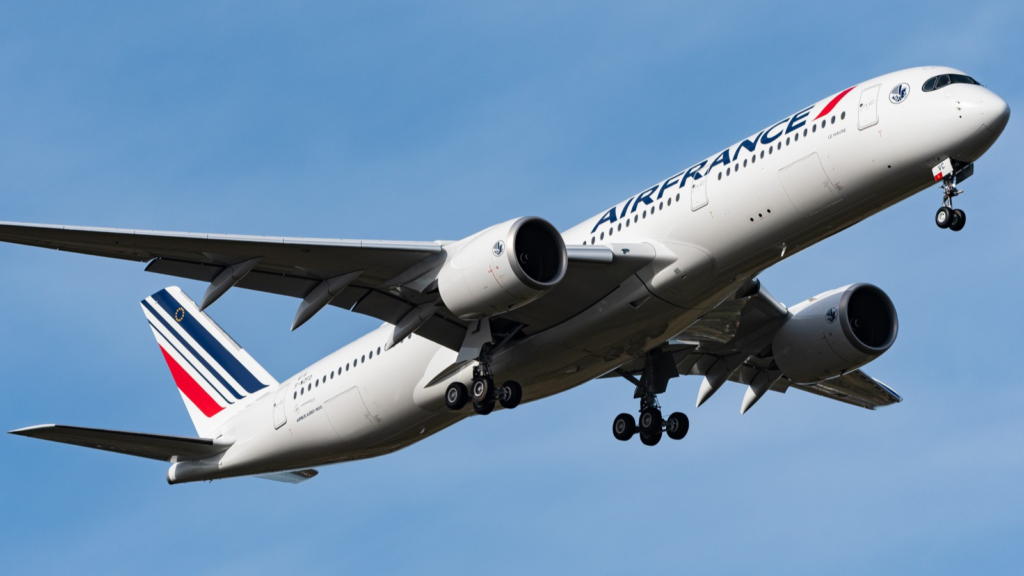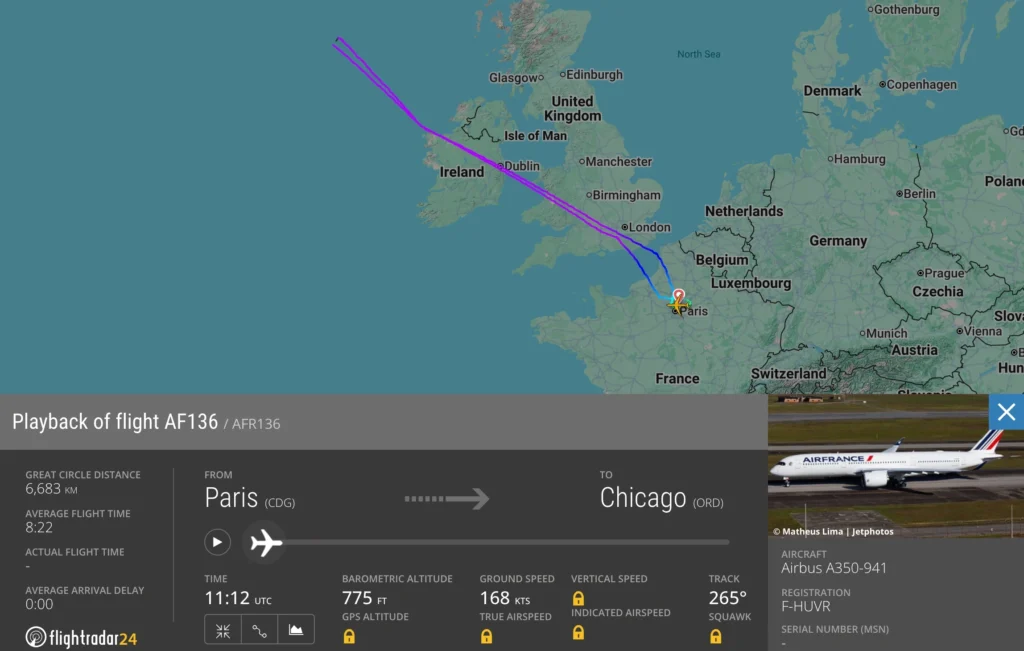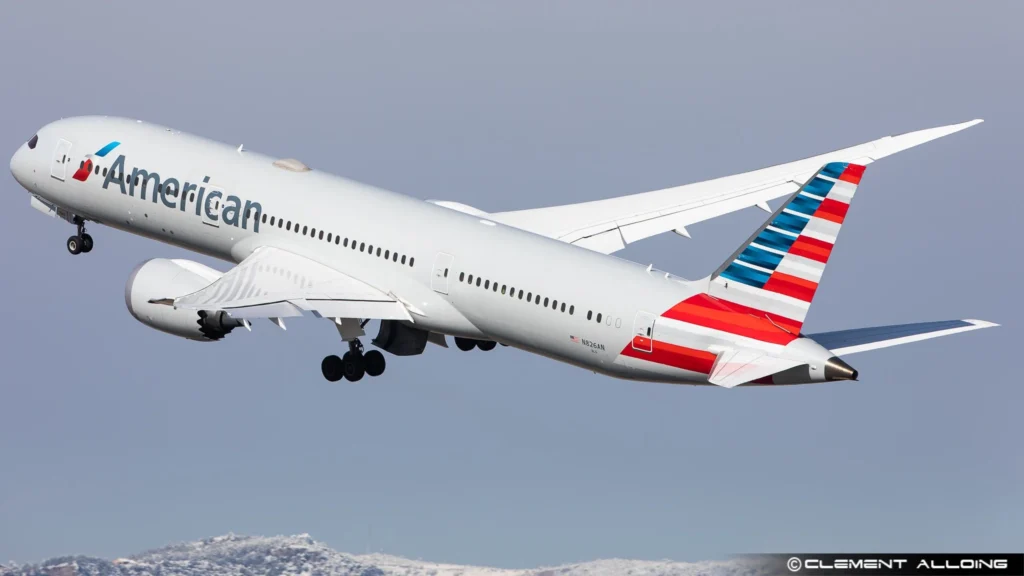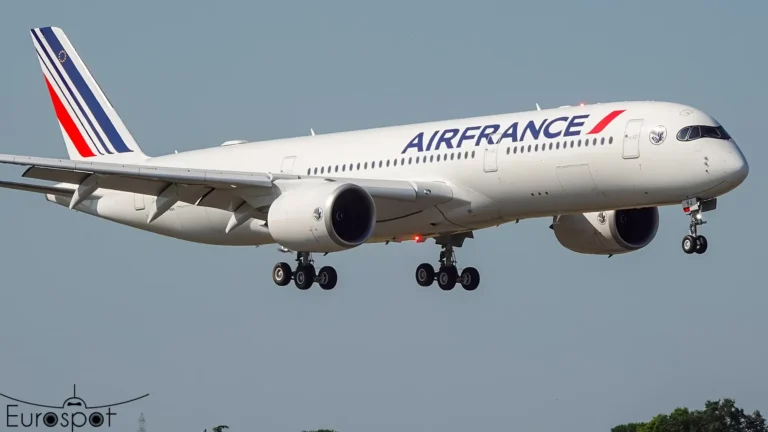PARIS- An Air France (AF) transatlantic flight to Chicago O’Hare (ORD) was forced to return to Paris-Charles de Gaulle (CDG) after nearly seven hours in the air.
Flight AF136, operated by an Airbus A350-900, was en route from Paris (CDG) to Chicago (ORD) when the crew reversed course mid-flight, citing operational reasons after reportedly being denied landing clearance, flagged AIRLIVE.

Air France Denied Landing Clearance at Chicago
According to FlightRadar24 data, Air France flight AF136 departed Paris-Charles de Gaulle Airport (CDG) at 12:49 local time on Saturday, June 28, 2025, bound for Chicago O’Hare International Airport (ORD).
Operated by an Airbus A350-900 (registration F-HUVR), the flight took off from runway 26R and reached a cruising altitude of 38,000 feet while following a typical northerly transatlantic route via the UK.

At approximately 16:30 CEST, while flying over the mid-Atlantic between Iceland and Greenland, the flight crew made the decision to return to France.
Although the aircraft had already completed nearly half of the journey, operational constraints prompted the airline to redirect the flight back to its point of origin.
According to a passenger who contacted the AIRLIVE newsdesk, the reroute was due to the flight not receiving landing authorization at Chicago O’Hare. Air France later confirmed the return was made for “operational reasons,” without providing further specifics.
Flight AF136 landed safely on runway 27R at Paris-Charles de Gaulle Airport (CDG) six hours and 37 minutes after departure. Air France arranged overnight accommodations for the affected passengers and rebooked them on a replacement flight.
The substitute service, flight AF4080, departed Paris (CDG) for Chicago (ORD) on Sunday, June 29, at 14:20 local time. Passengers were informed and assisted at the airport in coordination with the airline’s ground staff.

Similar Incident
An unexpected aircraft substitution caused American Airlines (AA) Flight AA780 from Philadelphia (PHL) to Naples (NAP) to divert mid-flight due to airport certification issues involving the Boeing 787-9 aircraft.
Despite clear weather in Naples and no reported operational disruptions, the transatlantic flight was rerouted to Rome Fiumicino Airport (FCO) after discovering mid-descent that the aircraft type was not approved for landing at Naples Airport (NAP).
Flight AA780 departed Philadelphia International Airport (PHL) on June 2, 2025, at 7:42 PM, bound for Naples International Airport (NAP). The flight, typically served by a Boeing 787-8, was unexpectedly upgraded to a Boeing 787-9 (registration N837AN). Though similar in design, the 787-9 is a longer, heavier variant with slightly different performance and operational characteristics.
As the aircraft approached southern Italy, the flight crew altered course and diverted to Rome Fiumicino Airport (FCO), approximately 124 miles away. The diversion was not due to weather; skies were clear in Naples, and no other flights were affected.
According to reports sourced by aviation insider @xJonNYC and confirmed by OMAAT, the Boeing 787-9 had not been certified for operations at Naples Airport.
While the airport accommodates the slightly smaller 787-8, it likely imposes restrictions on the 787-9 due to runway, apron, or taxiway limitations, or other infrastructure constraints determined by Italian aviation regulators.
Boeing Variant Differences and Airport Compatibility
Although the Boeing 787-8 and 787-9 share many similarities, their differences can have major implications for airport compatibility.
The 787-9 is about 20 feet longer and has a higher maximum takeoff weight, which can affect braking performance, gate compatibility, and taxi maneuvering, especially in airports with tight layouts like Naples (NAP), situated near mountainous terrain.
Airports must certify specific aircraft models based on infrastructure, safety margins, and local regulatory approvals. The swap to the 787-9, although operationally beneficial for American Airlines (AA), evidently bypassed a vital compatibility check.

Operational Recovery
Following the unplanned landing at Rome Fiumicino (FCO), American Airlines faced the dual challenge of repositioning both aircraft and flight crew. The airline used its existing Rome–Chicago O’Hare (ORD) service, typically operated by a 787-8, to facilitate recovery.
The diverted 787-9 was reassigned to fly the Rome–Chicago route, while the 787-8 (registration N880BJ), originally intended for Chicago, was rerouted to handle the Naples-bound segment.
Due to flight duty time restrictions for the crew, the onward flight to Naples did not resume immediately. Instead, the 787-8 and its crew overnighted in Rome. On June 4, they completed the short 38-minute flight to Naples and subsequently returned to Philadelphia (PHL) that afternoon.
Stay tuned with us. Further, follow us on social media for the latest updates.
Join us on Telegram Group for the Latest Aviation Updates. Subsequently, follow us on Google News

